Last updated on January 30, 2024
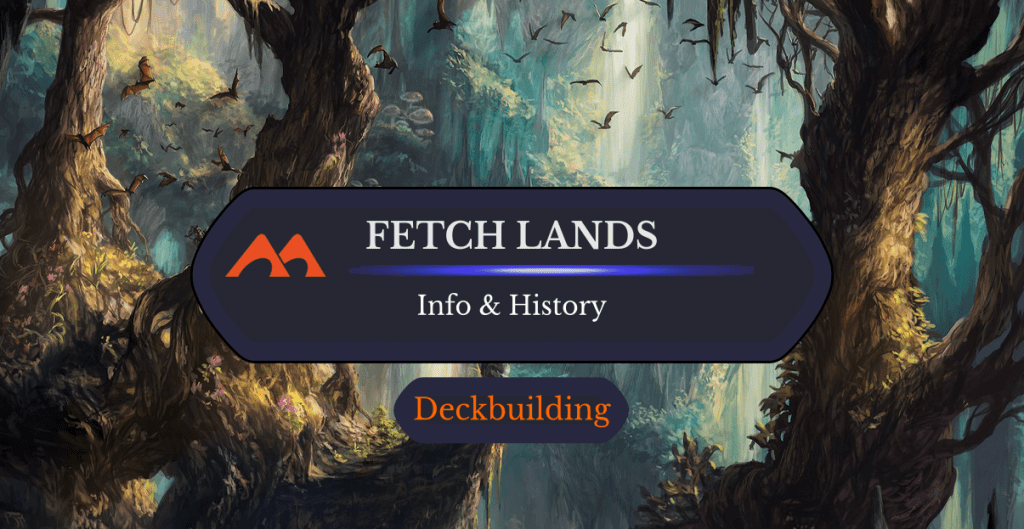
Verdant Catacombs | Illustration by Alayna Danner
To this day, I’ve never met an MTG player who’s never gotten screwed by a bad land draw. Sometimes you get too few (mana screw) and sometimes you get too many (mana flood). Finding a good balance of lands is crucial to any deck.
One of the most powerful ways to do this is with fetch lands. We’ve talked about shock lands before, and now it’s time to talk about another useful way to smooth out your mana.
What Is a Fetch Land?
A fetch land is a nonbasic land that you can pay one life and sacrifice to search your library for a particular basic land type and put it into play. You can also search for a nonbasic land, but more on that later.
Fetch lands were originally printed in Onslaught and Zendikar:
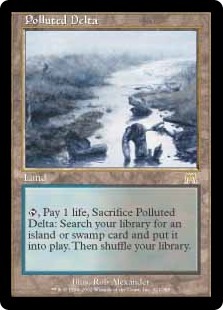
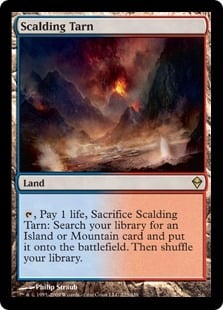
Full List of Fetch Lands
Here's the list of what are now known as “the fetch lands”:
- Windswept Heath
- Flooded Strand
- Polluted Delta
- Bloodstained Mire
- Wooded Foothills
- Marsh Flats
- Scalding Tarn
- Verdant Catacombs
- Arid Mesa
- Misty Rainforest
Onslaught Allied Fetches
The Onslaught set was released in 2002 and brought the first five fetch lands with it: Windswept Heath, Flooded Strand, Polluted Delta, Bloodstained Mire, and Wooded Foothills.
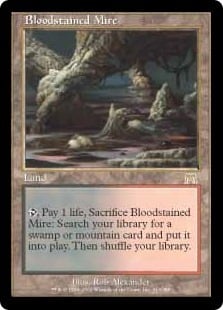


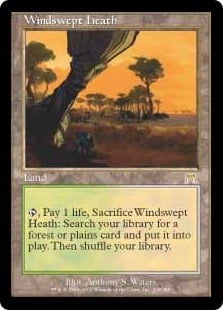
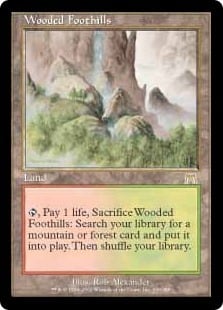
Unlike Mirage‘s “slow fetch” lands, these come into play untapped and you need to pay one life to sacrifice them and fetch your land. They also each align with one of the allied color pairs and can only fetch you a land from its pair. Oh, and the land you fetch comes into play untapped, too. Bonus!
Zendikar Enemy Fetches
It took a long time, but Zendikar released in 2009, introducing five additional fetch lands: Marsh Flats, Scalding Tarn, Verdant Catacombs, Arid Mesa, and Misty Rainforest.
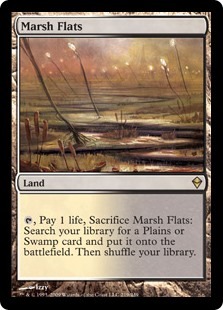

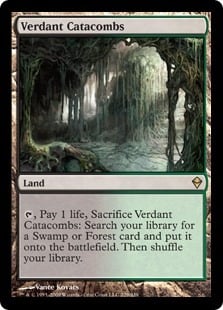
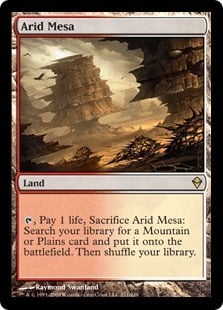
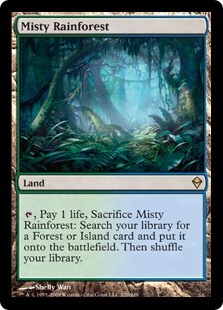
These fetch lands encompassed the enemy color pairs to complete the set. The 2002 fetch lands plus Zendikar’s new five quickly became popular among MTG players and they haven’t lost their popularity since.
These enemy fetches were also reprinted with the release of Modern Horizons 2 in June 2021.
What’s the Big Deal? Why Are Fetch Lands So Good?
Fetch lands are incredibly good because they fix your mana, can get basic or dual lands, provide a shuffle effect, and generate two landfall triggers.
Fetching Duals
Take a look at these lands, specifically their type line between the illustration and text box:

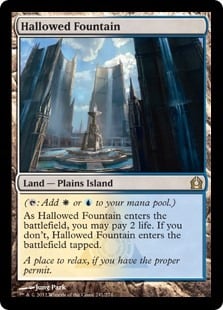

You’ll probably notice that Flooded Strand says “Land,” Hallowed Fountain reads “Lands – Plains Island,” and the Island says “Basic Land – Island.”
Because Flooded Strand allows you to search your library for a Plains or an Island and doesn’t specify basic or nonbasic, you could grab an Island or you could grab the Hallowed Fountain shockland, since it has Plains and Island as its subtypes.
You could also grab Watery Grave, Temple Garden, Godless Shrine, Steam Vents, Sacred Foundry, or Breeding Pool, as each has either Plains or Island as a basic land type.
Quick note: You’d still have to pay the two life to have shocklands enter untapped, as their ETB condition still applies. The fetch lands don’t specify if what they fetch enters tapped or untapped, so that’s up to the fetched card’s conditions.
Shuffle Away
There’s also the “shuffle” effect, which can come in handy. Let’s say you’re using Brainstorm, which allows you to draw three cards and put two on top of your library. If you have cards in your hand that won’t be useful in the next couple of turns, you can cast Brainstorm, put the cards you don’t want on the top of your library, and then fetch a land.
You’ll shuffle and get rid of the useless cards. Combine this with a couple scrying cards and you’ll have greater control over your draws.
Landfall Triggers
Finally, you can also trigger “landfall” effects multiple times by using fetch lands and then putting another land on the battlefield, which can help you quickly pile up a massive advantage.
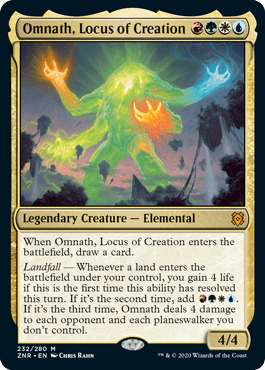
Fetch Lands in Modern, Legacy, Commander, Cube and More
There are multiple uses of fetch lands in theory, but how useful are they in practice? Naturally, it depends on your game style. They can simply be used for better mana in some decks while other decks rely on them to work.
Non-standard formats like Modern, Legacy, Vintage, Commander, and Cube where people have access to more cards find them particularly useful. Every deck needs to take multiple win conditions into account in these formats because of their variation.
People tend to use multiple colors while building decks in these formats (even more so than in Standard). Fetch lands help your deck become more versatile by giving you access to more cards across colors.
Some players argue that deck-thinning isn’t a solid strategy and is generally useless, but there’s still a good amount of people who use fetch lands to get the mana base they want quickly and reduce their chances of drawing additional lands. The benefit is marginal, but Magic is a game of small decisions. Sometimes you'll need to consider the cost of paying one additional life vs. the chance of drawing an extra land you don't need.
If you want a pro's opinion on how to build a mana base in a format like Modern, Reid Duke has a course that touches on this.
Money Talks: Why Are Fetch Lands So Expensive?
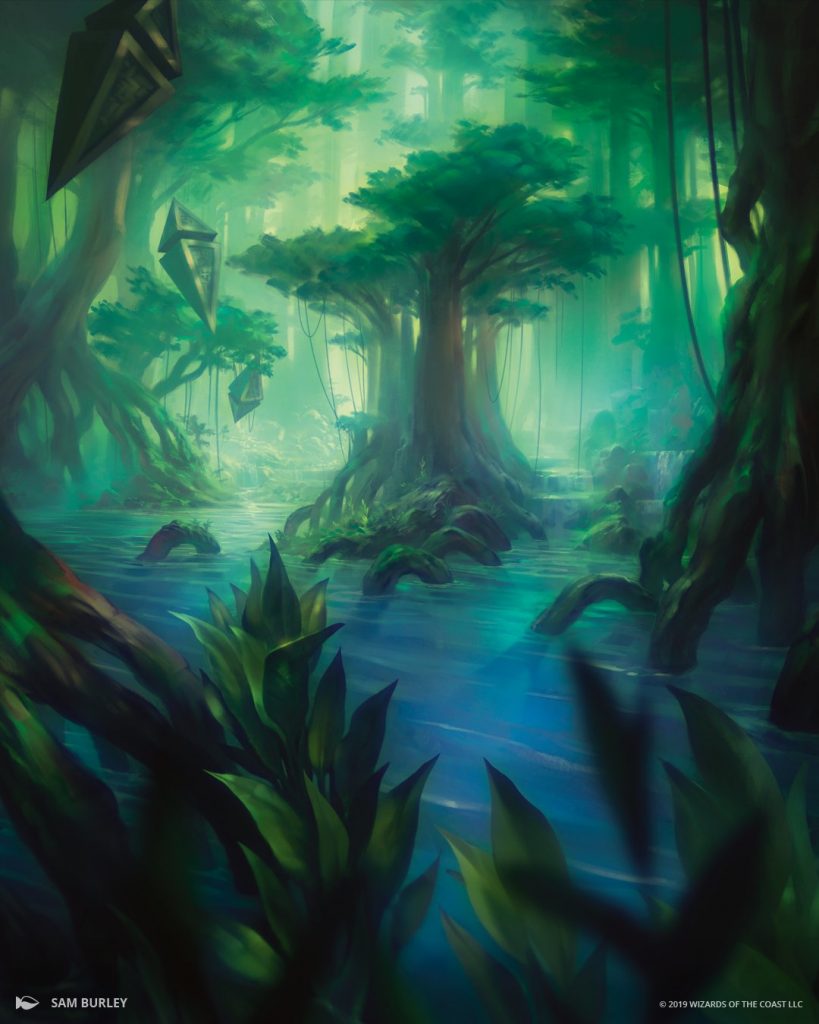
Misty Rainforest | Illustration by Sam Burley
Fetch lands are expensive because of their wide use across formats and their relatively low number of printings.
You can buy them from other players, but prices vary greatly, from $10 to $15 USD for rare older prints to a whopping $200+ USD for mythic reprints in releases like the Onslaught fetches as Magic judge promos.
Special Sets and Releases
Of course, being useful isn’t really the main reason for their price. The problem is with the supply. There were only a limited number of reprints for the 10 fetch lands. The Onslaught lands were reprinted in Khans of Tarkir in 2014 while Zendikar’s were reprinted in Modern Masters in 2017 and then again in Modern Horizons 2 in 2021.
They were also given as judge gift cards, but the supply was still pretty limited. Although Zendikar Expeditions came with 10 fetch lands back in 2016, they are quite rare, so the demand is still higher than the supply.
You can also get them from buying a booster box of Khans of Tarkir packs, which can net you somewhere between none or up to six fetch lands, but it’s a risky deal since you might not get a single one. Or you could get copies of one you’ve already collected or one you don’t want or need.
Finally, you can get the enemy fetch lands from Zendikar in Secret Lair: Ultimate Edition.
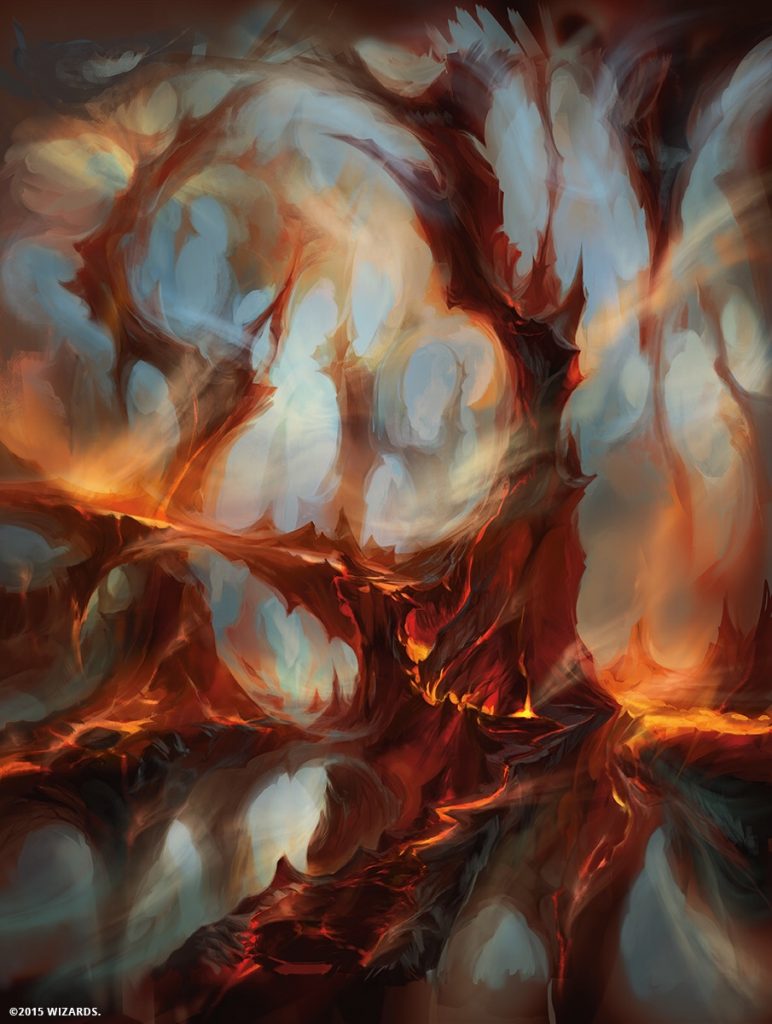
Bloodstained Mire | Illustration by Véronique Meignaud
In short, you can either go price hunting on an MTG card trading site like TCGPlayer, get some MH2 packs, or wait for future reprints.
How to Get Fetch Lands for Cheap
So we've established pretty well that the fetch lands are powerful, expensive, but if you're playing certain formats, you gotta have em. So what do you do?
The Source
If you're going to buy them, be smart about it. I recommend buying them on an open marketplace instead of from one seller. One seller may have a significantly higher markup than others, so when you buy somewhere that has multiple sellers competing, you're bound to get a better price.
A great example here is eBay:
You can score some seriously good deals by combing through the listings, particularly if a seller has underpriced something inadvertently.
A similarly good option is Amazon. Although there's no “low listing and bidding,” prices are typically pretty comparable (with multiple sellers competing), including with shipping.
Quite affordable, actually, at least for an older MTG card.
Condition
Totally understandable if you can't afford the fancy blinged-out judge promo or Zendikar expedition versions. In fact, I personally don't even care if the card is in near-mint condition. The card does the same thing!
This is where TCGPlayer can help out. The website has a marketplace of different sellers that all list their best price and the condition of the card for sale. So if we're looking for a Polluted Delta, maybe we can get a cheaper one by changing the condition selector:
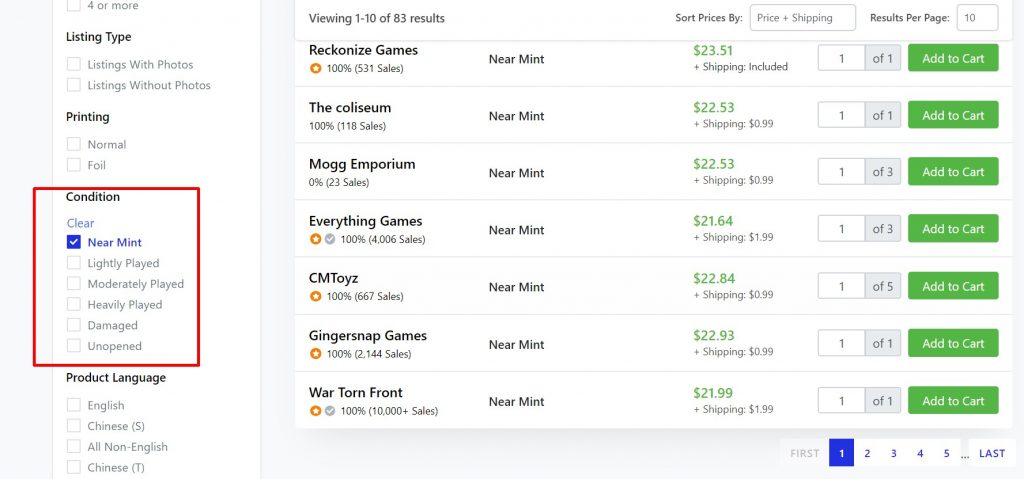
On Magic Online
The economy in Magic Online is utterly different than that of “real life.” Cheap cards IRL can cost a fortune on MTGO and vice versa. But the market there is pretty liquid, so you should be able to get a reasonable price. You can check the online pricing very easily on Cardhoarder or use their loan program to play whatever deck you want without worrying about acquiring the cards.
Getting Creative
Maybe you're even trying to score some fetches for a below-market rate. To do this, I might recommend checking out Facebook “Buy and Sell MTG” groups, Craigslist, and even garage sales and flea markets!
Honorable Mentions and Cheaper Alternatives
The “Originals:” Mirage Slow Fetch Lands
The first time any type of “fetch lands” were released was in 1996 when Mirage came out. These were Flood Plain, Bad River, Rocky Tar Pit, Mountain Valley, and Grasslands.

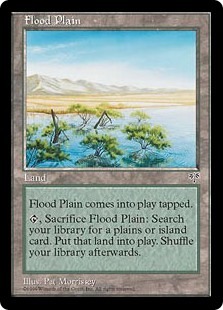
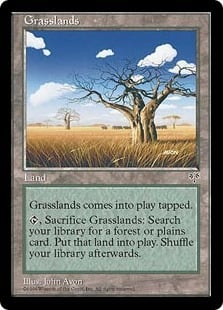
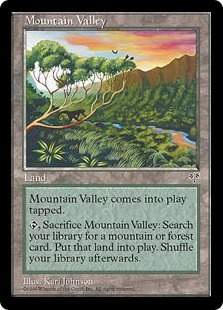
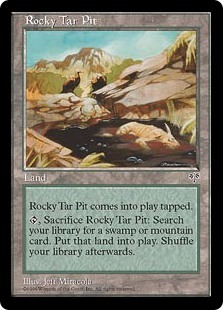
The issue is that the lands these fetch come into play tapped, so you have to wait a turn before you can use them. This means trading tempo for better mana development, which kind of sucks. These fetch lands are known as “slow-fetches,” and although they were very popular way back when, nowadays you’ll usually only spot them in budget decks.
OK, let's take a look at some other iterations:
Panorama Fetches
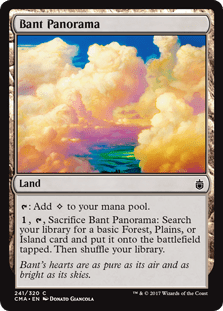



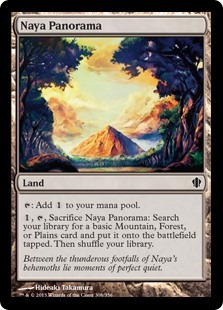
These can tap for a single colorless mana and can be useful for decks that use artifacts alongside multiple colors. However, they cost mana to sacrifice, can only fetch basic lands, and the lands they fetch come to play tapped, so they’re not ideal.
Blighted Woodland
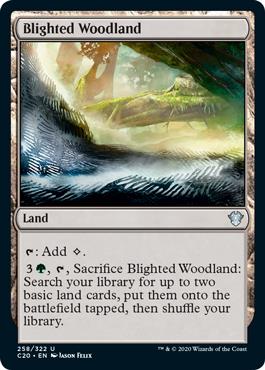
This can also be tapped for a colorless mana and allows you to fetch two basic lands, but at the cost of four mana, which essentially means skipping a turn.
Thawing Glaciers
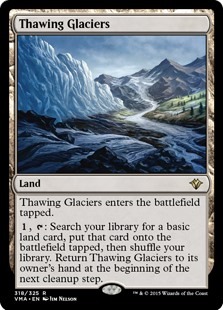
An old fetch land that allows you to play multiple lands in a single turn and returns to your hand at the end of the turn, but you’ll need to spend a couple of turns to fully utilize it.
Some Other Options
There are a couple more slow-fetch lands that essentially have the same mechanics as these ones and they’re much cheaper than their more useful counterparts, so you can try using them too:
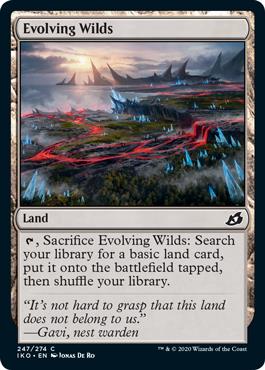


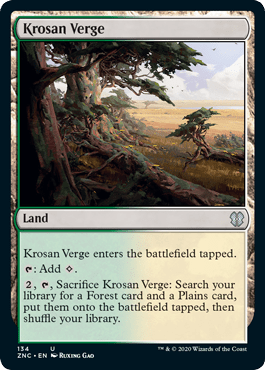
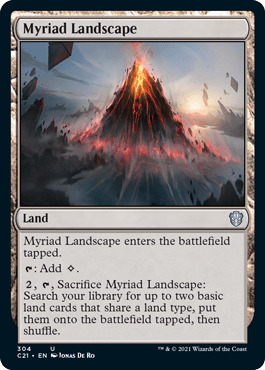
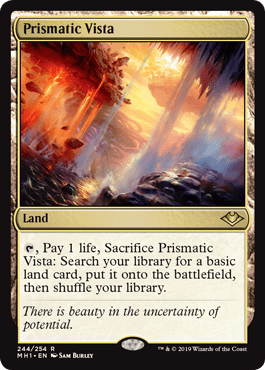
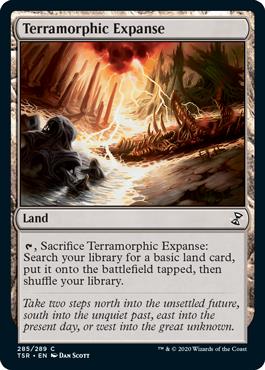
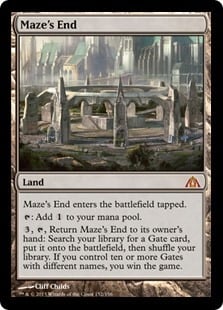
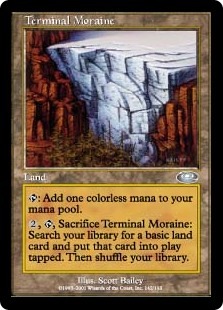
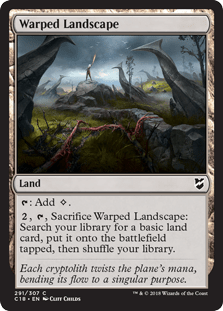
Final Fetch
Although their name might be cheesy, fetch lands have significant impact on any deck they’re in. They offer great control over a deck’s mana flow for a measly sacrifice of 1 life. Newer players might shy away from paying that cost, but veterans have long seen the benefit of these pricey go-getters.
They might not be in Standard—at least for now—but they’re sought after in almost any format they’re legal in. Be it Modern, Legacy, Commander, or Cube, there are lots of players who are willing to pay a lot of money to have them in their decks. What do you think? Are they nuts or are these cards just too powerful? Let us know in the comments below!
Note: this post contains affiliate links. If you use these links to make a purchase, you’ll help Draftsim continue to provide awesome free articles and apps.
Follow Draftsim for awesome articles and set updates:









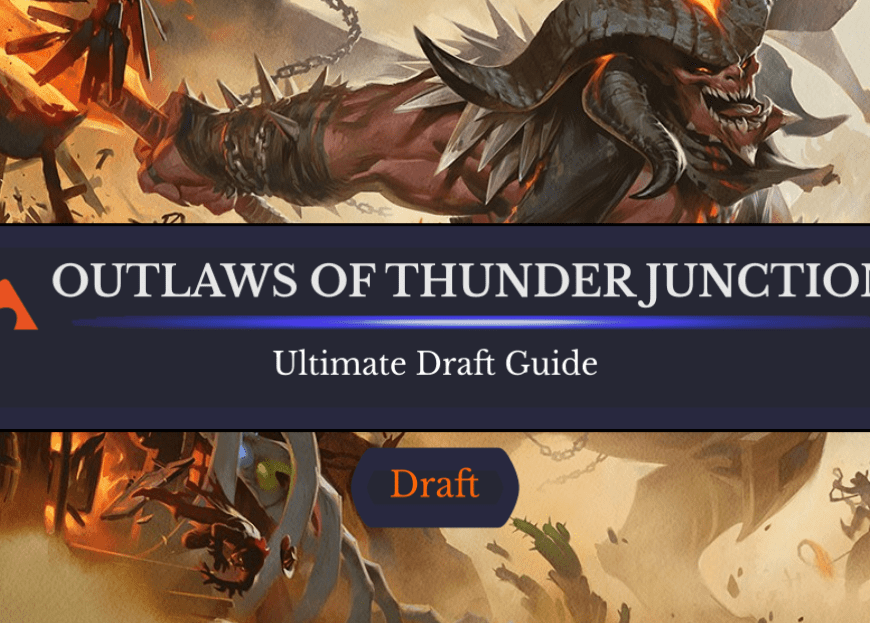
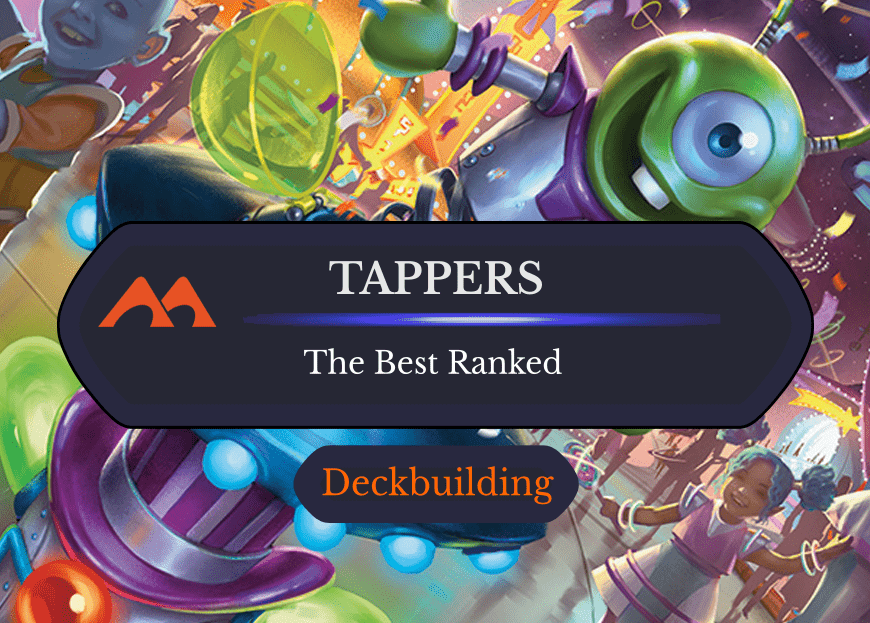
3 Comments
Great article! Any thoughts on the New Capenna fetches where they sacrifice on ETB with the life gain in comparison to the Alara fetches? I’m considering slotting some in for my mono-white deck. Thanks!
Hey, thanks for reading!
I don’t typically include them as I try to stray away from tapped lands in general (my playgroup is fast). However, I think they’re a great addition if your deck already has a lot of lifegain payoffs to begin with!
Great article! I’ve been wondering about Fetch Lands and how they work in Magic. It’s really helpful to have a clear explanation of what they are and how to get them for cheap. Thanks for sharing!
Add Comment